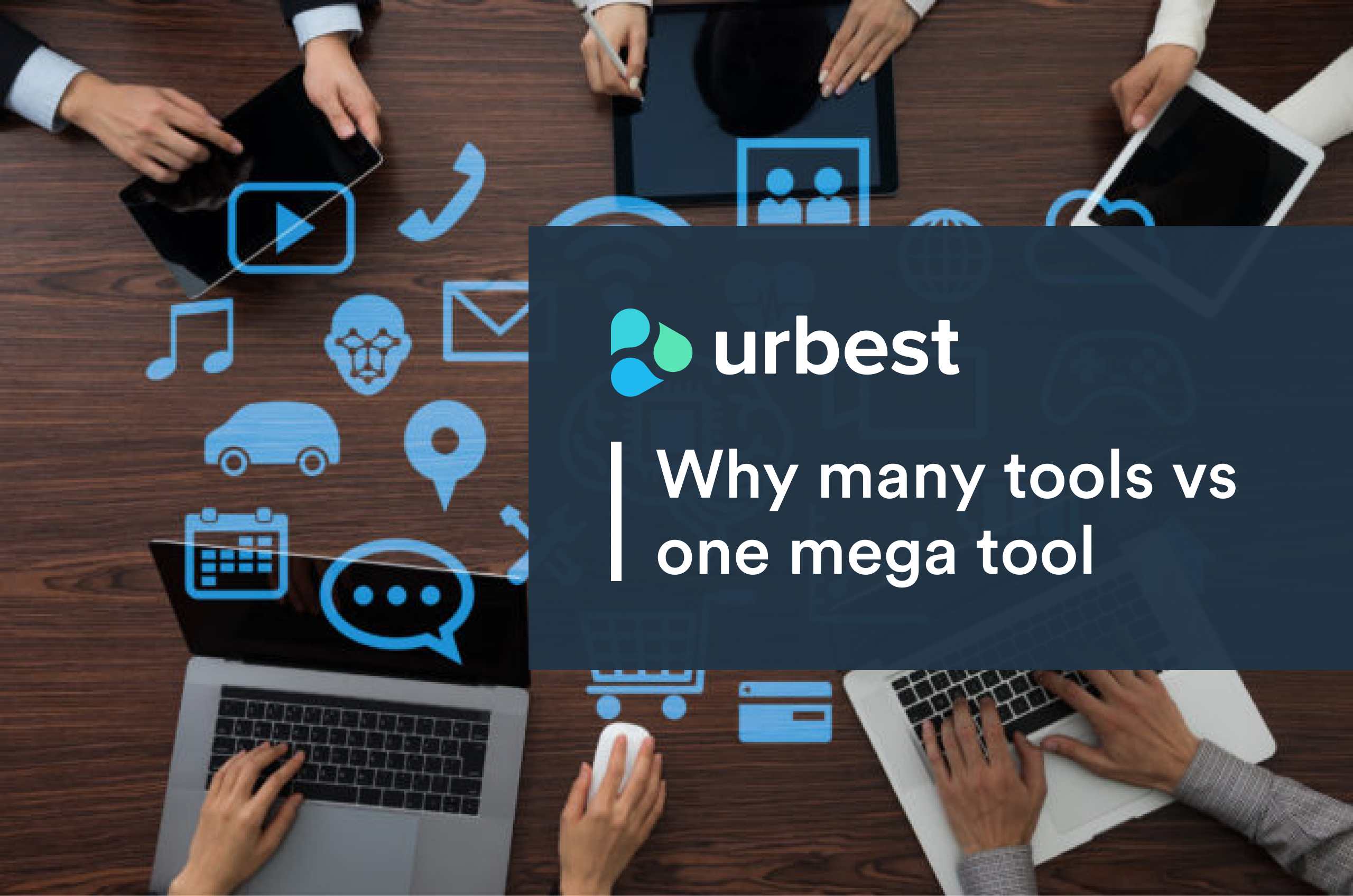Why many tools vs one mega tool
The world is changing and the digitalisation of all tools and processes continues to affect all business areas. More and more software companies are developing professional applications for users.

" Fewer moving parts means there is less that can break. "
The world is changing and the digitalisation of all tools and processes continues to affect all business areas. More and more software companies are developing professional applications for users.
Part I. Is there any interest in having a mega tool?
Many professional software companies have taken the challenge of creating software (that can be customisable) that tries to gather a large number of functionalities that are expected or believed that will be used by a group of people. Indeed the prospect of being able to find in a single platform all the useful functionalities used by the employees (mail, video meeting, accounting, database management...) may seem very appealing to many.
However, often we see that once the product is delivered the reaction from users is less than satisfactory, due to poor implementation or simply due to clunky interfaces for all those features. In that sense, today we see that the older and heavy multi-functional CMMS are step by step being replaced by specialised or ‘plug and play tools’. Following this thought the world of today and the continued process of modernisation has proven that it is better to master one field perfectly than to stay on the surface of many.
Also, the big tools have a number of flaws that are very hard to overcome for software companies. For example, all big tools require a lot more training for the end users, while in the end very few users actually use all the features of those platforms. The loss of time and money for the company buying such a service is therefore significant and eventually pushes companies to think differently when choosing a CMMS, for example.
In addition, the consumption habits of users in their private life have also put a brake on this kind of practice. In their personal lives, and thanks to the arrival of smartphones, users have become accustomed to using different apps for different tasks.
We will see in the second part what are the benefits of this multitude of specialised tools.
Part II. The benefits of having lots of specialised tools
The benefits of having specialised tools are simple. For example a CMMS is focused and designed for facilities teams and users. It is easy to use and accessible, provides value in real-time with minimal fuss, whilst also improves the security of your data.
This is what urbest.io aims to solve - by creating a simple way to manage issues and requests. But why choose a number of specialised tools over one big one? See below a few reasons we think are relevant:
- People use email to send some documents, communicate about some general things or request info.
- But people don’t use their email to have video conferences - they use zoom or google meets for that.
And zoom/meets does only that - video conferencing.
- People use WhatsApp or Viber then to exchange quick messages, pictures and videos with their friends, colleagues, and family. They don’t use the email or video conference app to do that.
The same logic can be applied to job tracking tools in facilities. As a company, you could choose one tool that manages holistically all the jobs/work orders and tracks in real-time all the updates and notifies the right people at the right place and then other tools for video conferencing, another for billing and payments and so on. In facility management for example, a platform like Urbest is gradually replacing the older CMMS. This type of specialised platform stands out from the older competitors because it is modern and meets current standards and user expectations such as: it is easy to use, runs out of the box with no training required and is available on web and mobile.
So, one could say that today, a v2.0 platform/tool must be:
- Simple, to reduce training time
- Secure because data protection is increasingly a priority
- Strong and specialised in a particular field
However, to succeed in a competitive world, new platforms must also be flexible enough to work together in an ecosystem and integrate easily with existing ones. That’s because one expects specialised and focused tools can then be used in various integrations/combinations to streamline more services.
Software companies are aware of this and offer readily available APIs in order to be able to integrate easily with other applications. This is also the case for Urbest which integrates Stripe into the platform for managing payments and invoices. Here we have two tools, each specialised in its own field, yet both work together and integrate seamlessly for the convenience of customers.
In conclusion, the future of several fields of activity and in particular that of maintenance and facility management, which are undergoing a process of modernisation, depends on the use of plug-and-play collaborative platforms. Thanks to these tools, companies will be able to give full satisfaction to their customers, follow the tasks of their employees and achieve greater efficiencies in running their operations.
